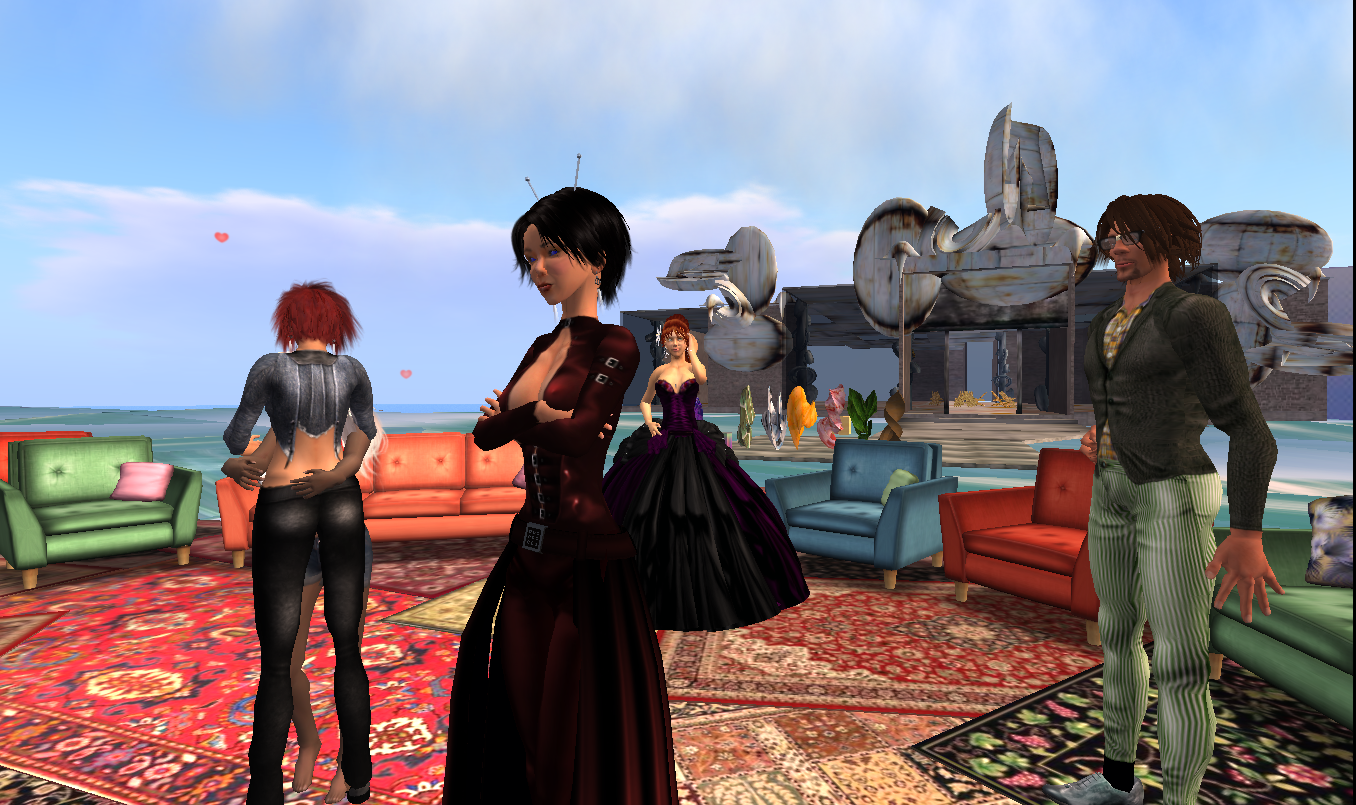THE POPULARITY QUESTION.
I will not offer a neat answer to these questions. I did try once, in the essay ‘Digital People and Anonymous Avatars’, but I would not be so bold as to say my solution was entirely satisfactory. Frankly, I do not think anybody will be presenting a compromise that suits everyone anytime soon. Instead, I will move onto another question, which is ‘how popular are active alts’?
Recall from part one that an ‘active’ is an alt that has a personality different to the one the primary presents with the main avatar. At the extreme end, the alt self is so different nobody even suspects it is an alt at all. In parts 2, 3 and 4 I tried to build the case that such roleplay is even possible. In part one we saw how there is a disjuncture between modern philosophies of self and personal identity, and lived experience (in that one insists the unitary self is an illusion, while for the latter it is the most basic reality). Part two looked to developmental psychology and neuroscience to explain why it can make sense to say a person can have many selves, despite the obvious fact that each person has only one body and brain. Part three showed how the widespread adoption of computers and the Web gave us something that we did not have before: Objects in the world with which to think about decentralization and multiplicity.
Computers, the Web, and how we as individuals and groups interact with and through them, provide metaphors for thinking about the postmodern view of constructed selves, or so many people think.
‘Did you ever see that cartoon by R. Crumb about “who is the real R. Crumb”?’, asked one contributer to a discussion about roleplaying on MUDs in the early 90s. ‘He goes through four pages of incarnations…then at the end he says, “which is the real one?… it all depends on what mood I’m in”. We’re all like that online’.
Wagner James Au has written about how text-based MUDs as a laboratory of self was an idea “ahead of its time. Creating a constant revolving theatre of role-play first requires a system expansive enough to be fluid, and believably so. It also requires an economy and a culture vibrant enough to make those shifts in identity meaningful and, at times, painful”.
Presumably, SL is just such a system, or at least closer to becoming one. According to some researchers, though, most of the roleplay going on in SL is not the psychological kind. When talking about the self, one can refer to the ‘social exterior’, which includes such things as a person’s height, weight, skin tone and behaviours. Or, one can be referring to the ‘psychological interior’, which pertains to things like thoughts, emotions and attitudes.
CHANGING BODIES, NOT SELVES.
In online worlds, the social exterior obviously applies almost entirely to how your avatar looks. In one survey, 68% of participants said their avatar differed significantly (in an idealized way) from their actual appearance. It was also noted that, generally speaking, the older the person was, the more their avatar leant towards an idealized, youthful body. As I have said before, the appeal of online worlds is the chance to have or do that which is not possible in real life. Escaping the physical aging of the body is currently one such impossibility. Avatar’s though, can be made forever young. It could also be asked if this tendency towards young and beautiful bodies in SL is really a personal choice, or more of a reflection of the ‘generalized other’, ie the dominating view of the society to which one belongs. Many commentators of online worlds have noted that people step into avatars very much like the perfect bodies we see every day on billboard posters and magazine covers. It is, in other words, a perpetuation of a predominately Westernized view of the idealized body.
When it comes to the social exterior, then, the general rule is ‘the more different (in an idealized way) my avatar is, the happier I am’. However, the same survey found the opposite is nearly always the case for the psychological interior. On average, it is the users with the smallest psychological difference between their online and offline selves who are most satisfied. That is not to say there are no differences at all. People tend to be more extroverted and less neurotic inworld compared to physical reality. But, these small differences aside, it seems few residents enjoy shifting personality too much. SL can be seen as a laboratory for role play, but it focuses almost exclusively on the social exterior, leaving the psychological interior pretty much unchanged.
Given that only 32% of residents set out to make an avatar that accurately models their RL appearance, but even fewer residents find it appealing to adopt anything other than a slightly idealized version of their psychological interior, one common stereotype has got to be wrong. Namely, that people who want to be ‘who I am in RL’ prefer avatars that look just like they do. No, nearly everyone strives for an appearance that transcends their RL appearance.




